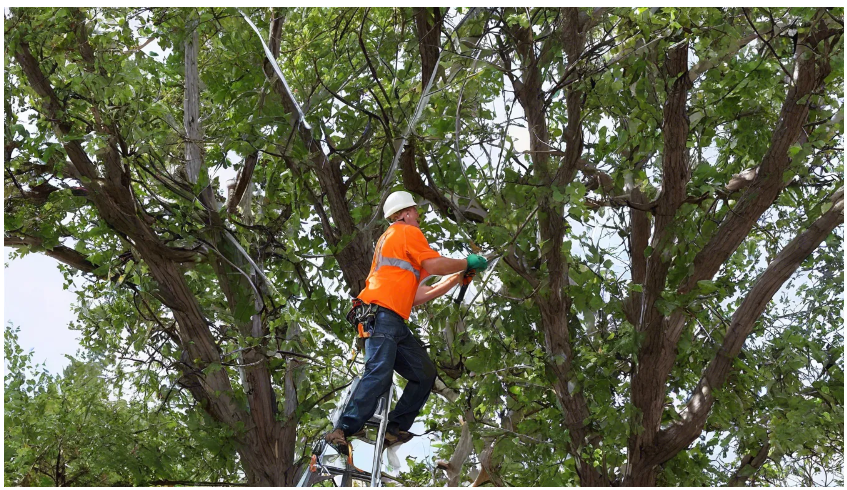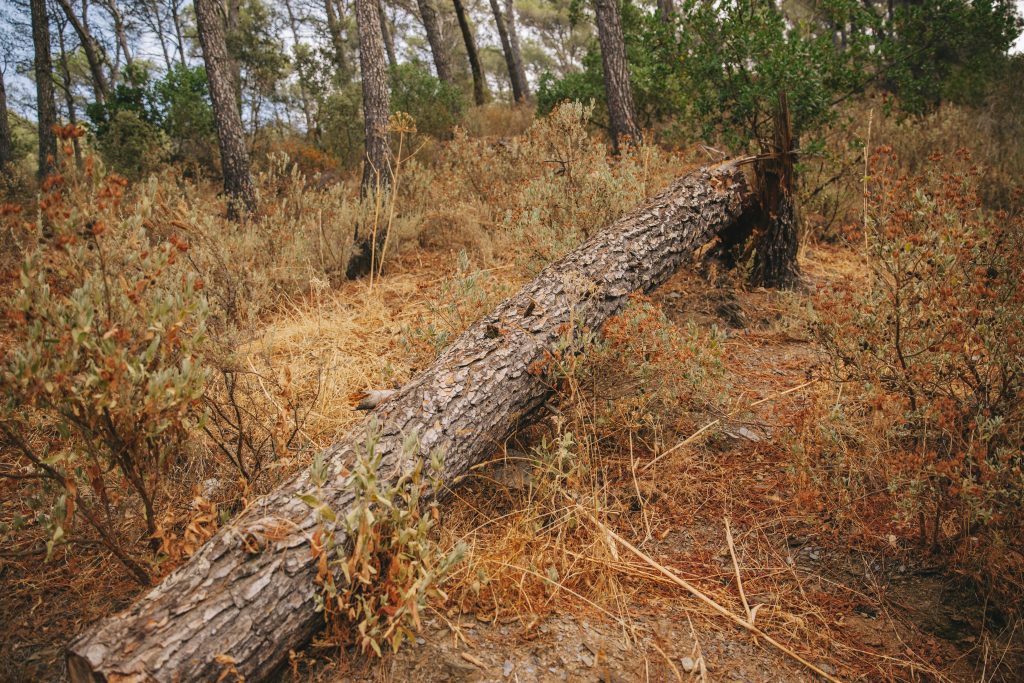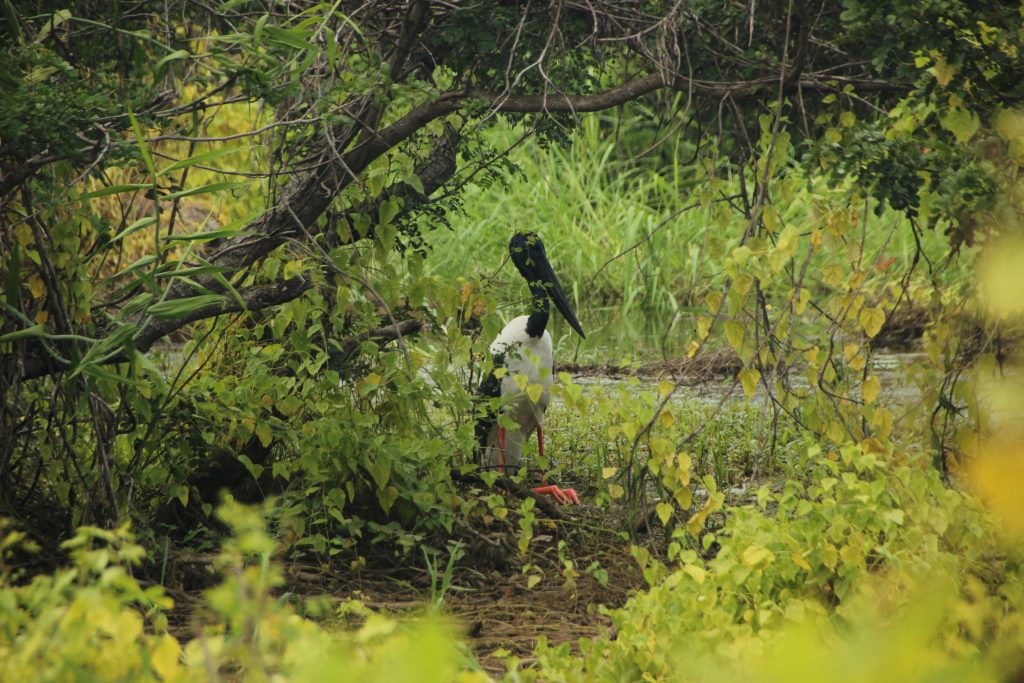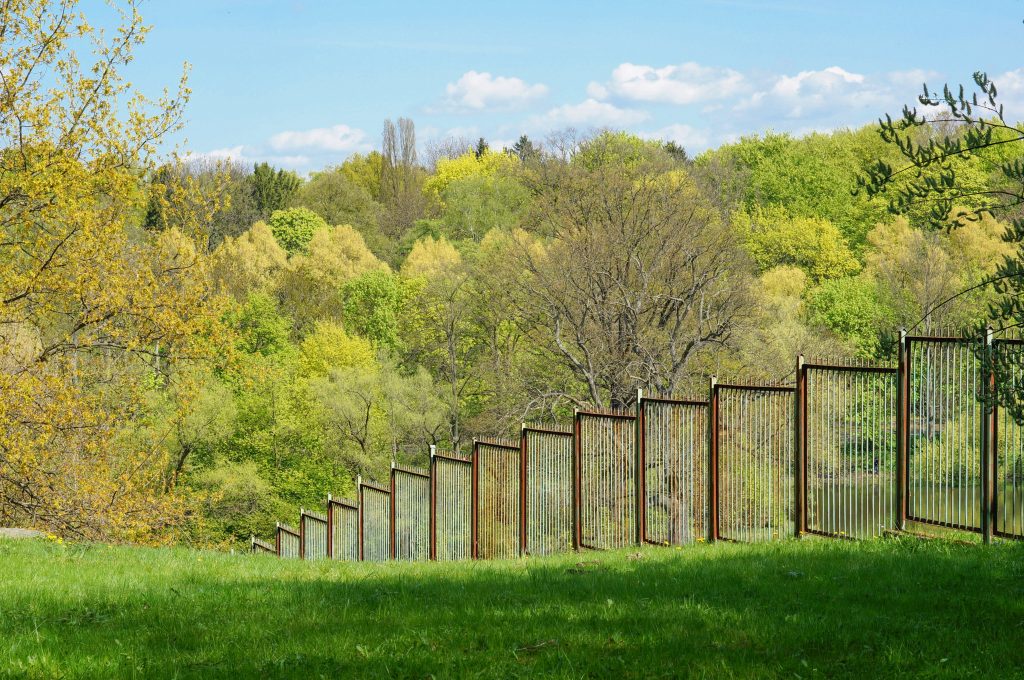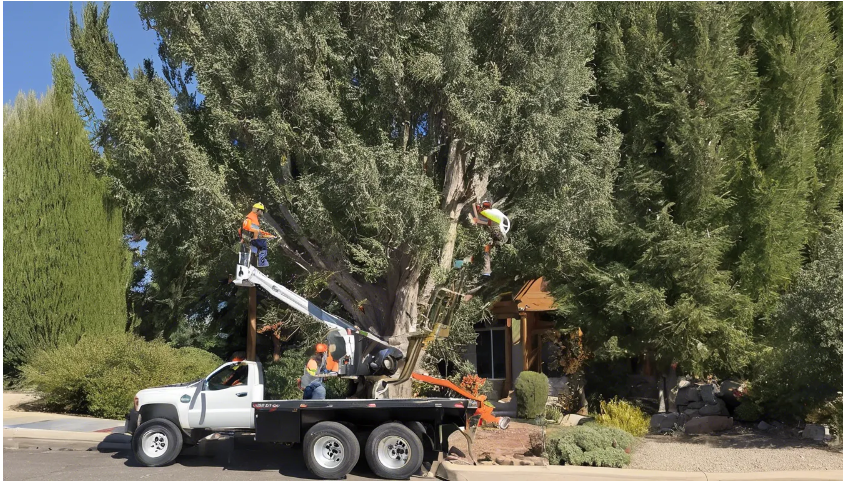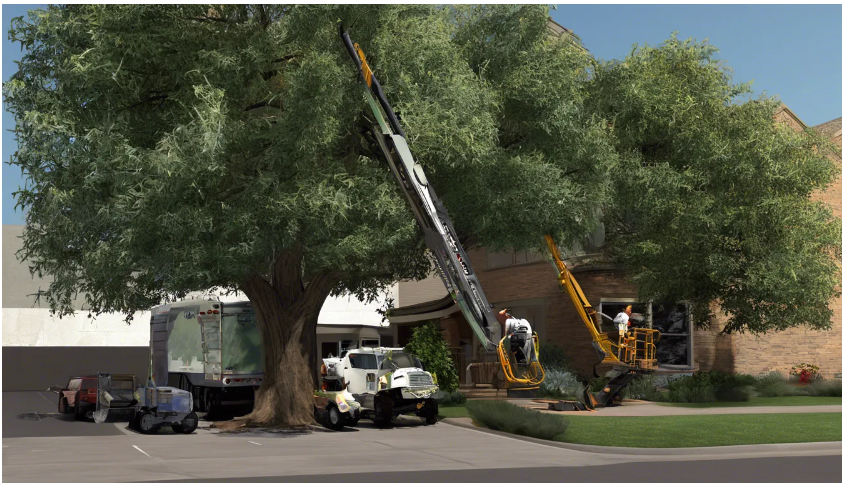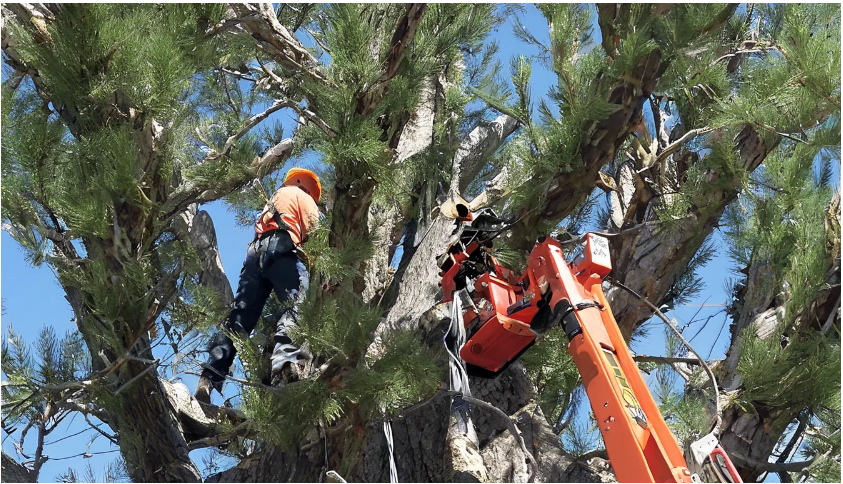Achieve Stunning Curb Appeal With A Skilled Commercial Landscaper Truco Services (801) 466–8044

Name: Truco Services, Inc.
Address: 4640 Commerce Drive, Murray, UT 84107 USA
Phone: (801) 466–8044
Website: https://trucoservices.com
Facebook: https://www.facebook.com/TruCoServices/
Twitter: https://twitter.com/attyjeremyevlnd
Youtube: https://www.youtube.com/channel/UCIlpSGk3aKxr8qV6iYIsCYw
Map: https://maps.app.goo.gl/Cyhddr5ix3snqgPL8
Hours of Operation: Monday — Friday: 8:00am — 5:00pm; Saturday — Sunday: Closed
Categories: Landscaping Construction, Landcape Maintenance, Snow Removal, Lawn Care, Tree Removal, Tree Services, Commercial Installation, Pavers, Outdoor Kitchens, Sprinkler Systems, Permanent Holiday Lighting and more.
Transforming Your Property: Achieve Stunning Curb Appeal with a Skilled Commercial Landscaper Truco Services (801) 466–8044
When it comes to enhancing the appearance of your commercial property, achieving stunning curb appeal is key. A well-landscaped exterior not only attracts potential clients but also creates a welcoming environment for employees and visitors. Partnering with a skilled commercial landscaper like Truco Services can transform your property into a visually appealing space that stands out in the community. Call them at (801) 466–8044 to get started on your journey to a more inviting property.
Understanding the significance of curb appeal is the first step. Curb appeal refers to the attractiveness of your property’s exterior when viewed from the street. It encompasses everything from the condition of the landscaping to the organization of outdoor furniture. The right commercial landscaper can make significant improvements that elevate your property’s appeal.
Here are some of the ways you can achieve stunning curb appeal with the help of a professional landscaping service:
- Customized Landscape Design: A skilled landscaper will work with you to create a customized design that reflects your brand identity while maximizing the property’s natural features.
- Seasonal Plantings: seasonal plants and flowers can keep your landscape vibrant throughout the year. A commercial landscaper knows the best choices for your climate and soil.
- Efficient Maintenance: Consistent maintenance is vital for keeping your landscape looking its best. Regular lawn care, pruning, and weed control are essential services offered by experienced professionals.
- Hardscaping Features: Elements such as pathways, walls, and patios enhance the visual interest of your property. A commercial landscaper can design and install hardscaping features that complement your landscape.
- Water Management: Proper irrigation systems ensure your plants flourish while conserving water. Professionals can assess your property and implement the most effective watering solutions.
Choosing the right commercial landscaper can take your vision to the next level. With Truco Services, you receive not only expertise but also a passion for creating beautiful spaces. They understand that every property has unique characteristics and offer personalized service tailored to your needs.
Investing in your property’s curb appeal can have a positive impact on the overall value of your commercial real estate. Properties with professional landscapes often attract higher foot traffic, making them appealing to potential renters or buyers. Moreover, a well-maintained exterior reflects your commitment to quality and professionalism.
Additionally, curb appeal enhances your brand’s visibility. A pleasant landscape can serve as a valuable marketing tool, effectively showcasing your business to passersby. When visitors feel welcomed by beautiful landscaping, they are more likely to remember your property and recommend it to others.
Another essential aspect is sustainability. A skilled commercial landscaper like Truco Services understands how to incorporate environmentally friendly practices into your landscaping plan. This could include using native plants, implementing proper drainage systems, and creating eco-friendly hardscaping features. These practices not only benefit the environment but also reduce maintenance costs over time.
Establishing a strong partnership with a landscaping expert can also save you time and frustration. You can trust someone’s expertise to analyze your specific needs and provide the best options. This allows you to focus on running your business while ensuring your property looks stunning.
When you’re ready to achieve stunning curb appeal, reach out to Truco Services. Whether you’re looking for a complete landscape redesign or regular maintenance services, they are dedicated to delivering results that exceed your expectations. Call them today at (801) 466–8044 and let their expertise help elevate your commercial property.
To summarize, enhancing your property’s exterior with the help of Truco Services involves customized designs, seasonal planting, efficient maintenance, and sustainable practices. Together, these elements contribute to a captivating landscape that delivers lasting impressions and drives business success. Don’t underestimate the power of curb appeal; transform your property into an attractive and inviting space today!
The Importance of Curb Appeal for Commercial Properties
When it comes to commercial properties, first impressions matter more than you might think. Curb appeal is not merely about aesthetics; it plays a crucial role in attracting customers and clients. Whether you’re running a retail store, an office building, or a restaurant, the exterior of your property can significantly impact your success. By focusing on improving your curb appeal, you can differentiate your business from competitors and boost your bottom line.
The exterior of your commercial property is often the first point of contact for potential customers. This makes it essential to create a welcoming environment that invites people in. A well-maintained landscape, clean walkways, and visually appealing signage can work wonders in making your property stand out. Here are some reasons why investing in curb appeal is vital:
- Increased Foot Traffic: A beautifully landscaped exterior can catch the eye of passersby and increase foot traffic. When potential customers see a property that looks inviting, they are more likely to stop and explore what your business has to offer.
- Enhanced Brand Image: Your commercial property reflects your brand. A well-kept appearance signals professionalism and attention to detail. This can enhance your brand image and make your business more memorable.
- Higher Property Value: Regular landscaping and maintenance can increase the overall value of your property. Whether you plan to sell or lease your space, good curb appeal can lead to a higher appraisal.
- Positive Customer Experience: People tend to associate the experience they have with your property to the service and goods you provide. An appealing exterior creates a positive atmosphere, encouraging shoppers to linger longer and, potentially, make a purchase.
To truly achieve stunning curb appeal, partnering with a skilled commercial landscaper is crucial. A professional landscape designer, such as Truco Services at (801) 466–8044, can help you transform your outdoor space to meet your business needs while ensuring it remains visually captivating.
Here’s how a skilled landscaper can improve your commercial property:
- Customized Design: Every commercial property has its unique characteristics. A professional will assess your space and create a customized landscape design that highlights its strengths, complements its architecture, and suits your brand’s identity.
- Seasonal Planting: A landscaping expert understands how to choose plants that bloom beautifully in every season. By incorporating seasonal colors and textures, your property can remain attractive throughout the year.
- Functional Elements: Curb appeal isn’t just about looks. Professional landscapers can add functional elements like benches, walkways, or water features, enhancing the experience for your customers and creating a relaxing atmosphere.
- Routine Maintenance: Keeping a landscape pristine requires ongoing upkeep. Hiring a commercial landscaper allows you to sit back and relax while they handle trimming, weeding, and seasonal enhancements to keep your property looking its best.
Moreover, a well-planned landscaping project is not solely about plants and flowers. It can also incorporate hardscaping elements, such as patios, paths, and retaining walls, which can add depth and interest to your property. The combination of soft and hard elements creates a balanced design that captures attention and invites exploration.
Beyond plants and structures, lighting plays a pivotal role in curb appeal. Thoughtful outdoor lighting can enhance the beauty of your landscaping at night while improving safety for visitors. Consider employing warm-toned lights that highlight paths and focal points, making your property inviting around the clock.
Investing in curb appeal for your commercial property is vital for attracting customers and enhancing your brand image. By collaborating with a skilled commercial landscaper like Truco Services at (801) 466–8044, you can create an inviting and visually appealing environment that benefits your business in multiple ways. Don’t underestimate the power of a beautiful exterior; it can be your ticket to increased customer engagement and business success.
Key Landscaping Elements That Enhance Exterior Aesthetics
Creating an inviting and visually appealing outdoor space can significantly enhance your property’s exterior aesthetics. Effective landscaping goes beyond simple grass and shrubs; it incorporates various elements that come together to create a harmonious and attractive environment. Below are key landscaping elements that can elevate your property’s curb appeal and charm.
Colorful Plant Selection
Choosing the right plants makes a huge difference in your landscape’s vibrancy. Consider incorporating:
- Seasonal Flowers: Annuals and perennials can provide bursts of color throughout the year.
- Foliage Plants: Different shades of green can create a lush feel. Look for varieties with unique leaf shapes or patterns.
- Evergreens: They add structure and color to your landscape even in winter.
By selecting a diverse range of plants, you create visual interest. Mixing colors and types can turn a bland yard into an eye-catching landscape.
Walkways and Pathways
Effective pathways guide visitors through your landscape while adding organization. Options to consider include:
- Stone Pavers: Durable and stylish, they create a natural look.
- Gravel Paths: Easy and cost-effective, gravel provides a casual and rustic appearance.
- Wooden Decking: Adds warmth and texture, ideal for seating areas.
Well-designed paths not only direct foot traffic but also enhance the overall flow and feel of your garden.
Water Features
Water features can take your landscaping to the next level. They add a sense of tranquility and can include:
- Fountains: Eye-catching and soothing sounds make a fountain a focal point.
- Ponds: A pond can serve as a habitat while providing visual depth.
- Waterfalls: Cascading water adds motion and a natural aesthetic.
These features attract wildlife and promote relaxation, making your outdoor space more inviting.
Lighting Techniques
Strategic outdoor lighting not only improves safety but also enhances the beauty of your landscape at night. Effective lighting can include:
- Spotlights: Highlight specific plants or features.
- Path Lights: Illuminate paths for safety and ambiance.
- Garden Lights: Create a warm glow around seating areas.
Proper lighting transforms your landscape into a dreamy space during the evening, enhancing the charm of your garden.
Outdoor Structures
Structures provides functionality as well as aesthetic appeal. Consider:
- Arbors and Trellises: Great for climbing plants, they add vertical interest.
- Patios and Decks: These areas create spaces for entertainment and relaxation.
- Gazebos: They provide shade and can act as a beautiful focal point.
Outdoor structures invite you and your guests to enjoy the space while adding a unique character to your landscape.
Maintenance and Care
Regular maintenance is crucial for keeping your landscape looking its best. Important tasks include:
- Consistent Pruning: Regularly trimming plants keeps them healthy and well-shaped.
- Lawn Care: Weekly mowing and fertilization offer a lush green look.
- Weeding: Removing unwanted plants helps maintain order and beauty.
Establishing a routine maintenance schedule ensures your landscape remains inviting and attractive throughout the seasons.
By focusing on these key landscaping elements, you can significantly enhance your exterior aesthetics. Consider bringing in Truco Services (801) 466–8044, a skilled commercial landscaper, to help you achieve stunning curb appeal that will make your property the envy of the neighborhood. Their expertise can facilitate the transformation you envision, providing tailored solutions that suit your needs. With the right landscaping elements and professional guidance, your outdoor space can exude beauty and charm for all who visit.
How Professional Landscaping Can Increase Property Value
When it comes to selling or renting your property, first impressions matter significantly. One of the most effective ways to enhance your property’s appeal is through professional landscaping. An inviting exterior, complete with lush lawns and thoughtful designs, can not only attract potential buyers or tenants but also significantly increase the overall value of your property.
Investing in high-quality landscaping services, like those offered by skilled professionals such as Truco Services (801) 466–8044, can transform your outdoor space into a stunning visual statement. Here’s how professional landscaping can elevate your property’s value:
Enhanced Curb Appeal
Curb appeal plays a crucial role in establishing the attractiveness of a property. A well-maintained lawn, vibrant flower beds, and strategically placed shrubs grab attention and make your property stand out. By hiring a professional landscaper, you ensure that every element of your outdoor space is thoughtfully curated to create an inviting atmosphere. This is especially important if you’re looking to sell or lease; potential buyers often make snap judgments within seconds of seeing a home.
Increased Usable Space
Professional landscaping can also transform underutilized areas of your property into functional outdoor living spaces. This includes:
- Patios for dining and socializing
- Decks for relaxation
- Gardens for growing flowers or vegetables
- Pathways that enhance accessibility
Creating these spaces allows potential buyers or tenants to envision their lives unfolding in your outdoor areas, thereby increasing the property’s perceived value.
Environmental Benefits
Landscaping doesn’t just beautify; it also contributes positively to the environment. Trees and plants can improve air quality and reduce carbon footprints. Additionally, they help manage water runoff, reduce heating and cooling costs, and even provide wildlife habitats. These ecological benefits are increasingly appealing to environmentally conscious buyers, further enhancing property value.
Increased Property Functionality
Smart landscaping adds value by improving the functionality of your property. With features such as:
- Well-placed outdoor lighting
- Fencing for privacy or safety
- Outdoor kitchens and fire pits
- Play areas for children
These enhancements can make your property more attractive to families and individuals looking for a comfortable living environment.
Lower Maintenance Costs
A professional landscape design can minimize future maintenance costs. Well-planned layouts with native plants reduce the need for excessive watering and care. Choosing perennials instead of annuals can save you time and money in the long run. Furthermore, a skilled landscaper will apply knowledge in soil conditions and plant choices that create a sustainable landscape, reducing upkeep requirements.
Increased Market Value
Statistics show that well-landscaped homes can sell for up to 15% more than comparable homes without landscaping. By investing in landscaping, you’re making a smart financial move. Whether you aim to sell your property or rent it out, a beautifully landscaped exterior can make the difference between a property that lingers on the market and one that sells quickly at a high price.
Technology and Smart Solutions
Modern landscaping has evolved to incorporate technology. Automated irrigation systems can save water and provide optimum care for your plants. Additionally, incorporating smart lighting helps you highlight your garden’s beauty after dark. This innovative approach not only adds aesthetic appeal but also enhances convenience, making your property more attractive.
Ultimately, investing in professional landscaping is about transforming your outdoor space into a beautiful, functional area that adds real value to your property. Whether you’re updating existing landscapes or starting from scratch, skilled landscapers like Truco Services (801) 466–8044 can help you create a lasting positive impression that translates to increased property value.
The benefits of professional landscaping extend well beyond mere aesthetics. By enhancing curb appeal, improving functionality, and being environmentally conscious, you not only create an enjoyable space for yourself but also investments that yield long-term financial benefits.
Seasonal Maintenance Tips for Sustaining Curb Appeal
Maintaining curb appeal throughout the changing seasons is essential for property owners looking to create a welcoming atmosphere. Whether you’re a homeowner or manage commercial properties, the right seasonal maintenance makes all the difference. Here are some practical tips to keep your landscape looking stunning year-round.
Spring Care
As spring arrives, it’s time to awaken your landscape from its winter slumber. Focus on the following tasks to revitalize your curb appeal:
- Clean Up Debris: Remove any fallen branches, leaves, or trash accumulated during winter. This step creates a neat look and prepares your garden for new growth.
- Trim and Prune: Cut back overgrown shrubs and trees to promote healthy growth. This also enhances the shape and aesthetic appeal of your landscape.
- Mulch Your Beds: Fresh mulch not only helps retain moisture but also gives flower beds a polished look. Choose organic mulch that complements your plants.
- Introduce Color: Plant vibrant flowers for a burst of color. Opt for perennials for long-term blooms or annuals for a quick seasonal touch.
Summer Upkeep
During the summer, your landscape requires consistent attention and care to thrive. Here’s how you can keep everything looking its best:
- Water Regularly: Ensure your plants receive enough water, especially during dry spells. Deep watering is preferable to shallow sprinkling to promote healthy root growth.
- Deadhead Flowers: Remove spent blooms from flowering plants. This encourages further flowering and keeps your garden looking fresh and vibrant.
- Mow and Edge: Regularly mowing your lawn and creating crisp edges along walkways and flower beds promotes a tidy appearance and enhances overall curb appeal.
- Inspect for Pests: Keep an eye out for signs of insects and diseases. Early detection can prevent significant damage and maintain your landscape’s health.
Autumn Preparation
As the leaves change color and fall approaches, it’s crucial to prepare your landscape for the colder months ahead:
- Clean Up Leaves: Raking and removing fallen leaves prevents mold growth and keeps your lawn healthy. Additionally, this cleanup helps maintain neatness.
- Plant Fall Bulbs: This is the perfect time to plant bulbs for spring flowers. Tulips, daffodils, and hyacinths will blossom beautifully when warmer weather returns.
- Trim Back Perennials: After frost, cut back perennials to encourage healthy regrowth in the spring. This practice also reduces the likelihood of diseases.
- Winterize Your Tools: Prepare your gardening tools for storage by cleaning and oiling them. Proper maintenance ensures longevity and readiness for the next season.
Winter Care
Even in winter, curb appeal shouldn’t be neglected. Here are some strategies for maintaining a visually appealing landscape:
- Maintain Pathways: Clearly defined and maintained walkways prevent accidents in icy weather. Regularly clear snow and ice to ensure safety for visitors.
- Consider Evergreens: Incorporate evergreen plants and shrubs that provide color and life during the dull winter months. They help maintain visual interest in your landscape.
- Decorate for the Seasons: Seasonal decorations can enhance your property’s appeal. Consider tasteful holiday decorations that complement your landscape’s aesthetics.
- Plan for Spring: Use this time to plan your spring landscape upgrades. Research plants you’d like to introduce and consider what changes would best enhance your property’s appeal.
By following these seasonal maintenance tips, you can sustain impressive curb appeal throughout the year. If you’re looking for expert assistance, consider partnering with a skilled commercial landscaper like Truco Services at (801) 466–8044. Their expertise can help transform your outdoor spaces into beautiful landscapes that make a lasting impression.
Key Takeaway:
Achieving stunning curb appeal is essential for any commercial property, and enlisting the expertise of a skilled commercial landscaper like Truco Services (801) 466–8044 can make all the difference. As you consider transforming your property, remember that curb appeal is not just about appearance; it significantly impacts your business’s perception and success. An attractive exterior creates a welcoming first impression for clients, customers, and visitors, effectively setting the stage for the experience they will have inside.
When discussing the importance of curb appeal for commercial properties, it’s vital to recognize that a well-maintained landscape reflects professionalism and attention to detail. This level of care can inspire trust in potential clients, driving them towards your business over competitors with a less inviting exterior. Elements such as vibrant plants, well-defined pathways, and clean surfaces significantly enhance exterior aesthetics, making a property stand out.
In addition to aesthetic improvements, professional landscaping can also boost your property value. When done right, a sound landscaping strategy increases not only your property’s marketability but also its overall worth. Potential buyers recognize that a well-cared-for landscape implies less immediate investment in renovations, which can expedite sales.
Sustaining curb appeal goes beyond the initial installation; it requires ongoing effort. Seasonal maintenance tips, such as regular pruning, seasonal plant rotation, and proper lawn care, are crucial for keeping your landscape looking its best year-round. Collaborating with a skilled commercial landscaper ensures that your property remains vibrant and inviting regardless of the season.
To sum up, investing in professional landscaping through Truco Services can transform your commercial property, create an inviting atmosphere, and enhance your business’s value. Remember, the journey to stunning curb appeal starts with the right partner and a keen understanding of how to maintain it. Embrace the power of effective landscaping to ensure your property continues to shine in any season.
Conclusion
Enhancing the curb appeal of your commercial property is not just about making a good first impression; it’s about creating an inviting atmosphere that attracts customers and boosts your brand’s reputation. By partnering with a skilled commercial landscaper like Truco Services (801) 466–8044, you can transform your property into a stunning display that highlights its unique features and accommodates your specific business needs.
Investing in professional landscaping is a strategic move that pays dividends. It not only elevates your property’s overall aesthetics but also increases its market value. Potential clients and tenants are more likely to be drawn to well-maintained landscaping, which speaks volumes about the care and professionalism of your business.
Implementing key landscaping elements such as vibrant flowers, lush greenery, and strategic lighting can create a cohesive and appealing exterior that tells your brand’s story. Seasonal maintenance is vital to ensure your landscape continues to thrive throughout the year. Simple tasks like pruning, mulching, and seasonal planting can keep your curb appeal in top shape.
Ultimately, creating stunning curb appeal is a journey, not a destination. With Truco Services on your side, you’ll have the expertise needed to navigate this journey successfully. Embrace the opportunity to showcase your business with an exterior that not only stands out but also reflects the quality and values of your brand. Don’t wait — contact Truco Services today to start reaping the benefits of an inviting and beautiful landscape!
If you need a tree service in Utah, you can call:
Truco Services, Inc.
4640 Commerce Drive
Murray, Utah 84107
(801) 466-8044
https://truetreeservices.com/





